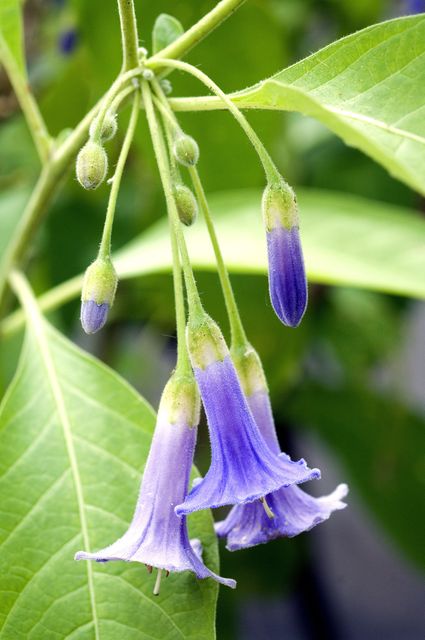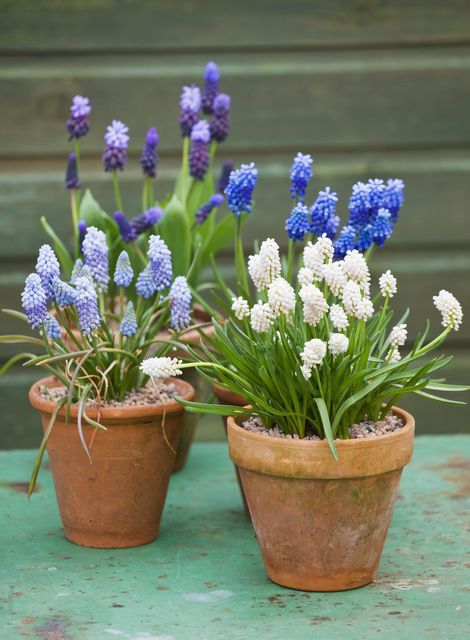These wildlife-friendly choices will keep pollinators happy throughout the summer
While the brightest bedding plants might catch our eye, some have been bred solely for colour and size and may have very little nectar or pollen. So what are the best bedding plants to support our all-important pollinators such as bumblebees, honeybees, hoverflies, butterflies and moths?
Generally, insects prefer plants with open flowers that make the nectar easier to obtain. So, for example, a simple, single-flowered dahlia will be the preferred option over a complex pompon-style dahlia. Daisy-like flowers are usually a good option, being rich in nectar and pollen. So if you want to be wildlife friendly this summer, here’s a selection that are colourful but also bee-friendly.
Bacopa is an excellent little trailing plant with small white flowers and compact foliage. It likes the sun but will tolerate a little bit of shade, making it a good bedfellow for trailing ivies. Bacopa flowers also come in pink and blue. It needs regular watering as, if stressed, the first thing to go will be the flowers.
Lobelia has always been a classic bedding plant and was ubiquitous in suburban plots in the 1970s, often paired with white alyssum. The pretty blue flowers are now a staple of hanging baskets and also come in white and pink varieties. Use trailing varieties to create fountains of flowers cascading down your pots. It has shallow roots so needs regular watering in the summer to keep it fresh.
Cosmos, with its daisy-like flowers, is a sure magnet for bees and is a lovely filler plant for borders. Its ferny foliage is light and airy and the flowers in pink and white have a long flowering season. The Sonata series is more compact for smaller spaces such as containers.
Deadhead to prolong flowering but let a few go to seed so you can sow them again next spring. A half-hardy annual, you can start seeds off in spring under cover or in situ in May. Pinch out while growing to form bushy plants or plant en masse, where they will support each other.
I love the electric violet-blue flowers of Heliotropium arborescens. The small, sweetly smelling flowers are very attractive to bees and butterflies, and the compact form of this plant makes it ideal for bedding or containers. Grow in a sunny spot in well-drained soil.
Let’s not forget our nocturnal pollinators. Plant night-scented stock and, every evening in the summer, enjoy a curtain of scent. It doesn’t look much in the day as the mauve flowers are closed up, but by late afternoon, they are opening up and releasing their wonderful fragrance to attract night-time pollinators such as moths. Sow in situ in spring in a sunny, well-drained spot, or earlier indoors. Great planted along a path or in pots beside somewhere you will sit in the evening.
Add some heat to your pots and containers with brightly coloured gazanias. The warm orange, reds and yellow daisy-like flowers love the heat and open up their flowers to the sun but will remain closed in the shade. Plant in well-drained soil.
Snapdragon (Antirrhinum) is one of those flowers that fascinates children who love to pry open the blooms. Bees love them as well and grip on to the lower-lip flower which opens to let them in. Coming in lots of bright colours, the spikes of flowers are suited to cottage-style, informal gardens.
There are plenty more that will provide sustenance for wildlife and pleasure for you, for example alyssum, marigolds, calendulas, sunflowers, zinnias, wallflowers and verbena.
Plant of the week
Dunalia australis
Dunalia australis Spotted on a recent walk around the National Botanic Gardens in Glasnevin, Dunalia is a member of the potato family and you will find it in the family beds in front of the Great Palm House. Also known as Angel’s Trumpet, the pendent purple flowers are eye-catching. It’s hardy to minus 5C, so suitable for milder or coastal areas, or you can grow it indoors. If outdoors, choose a warm, sunny and sheltered spot for best results.
Weekend Q&A
I want to start planting pots. Unfortunately, our back garden is covered in artificial grass. At the time, it made sense to have it with kids, but now I’d like some colour and life. I’m thinking of having clusters of pots together with different plants beside each other. Sinead
Potted plants
Plastic grass is an ecological desert so it’s great you want to introduce some life to your plot. You can grow many plants, including shrubs and trees, in pots but maybe start with some summer colour. This could be a mixture of herbaceous and bedding plants which will give you instant flowers and colour. I’d recommend starting with a few larger pots rather than lots of little ones, which can look spotty and ineffective. Invest in good large terracotta pots, good-quality compost and a trip to your local garden centre. Ask for advice and don’t just buy plants that are in flower — look for ones that are in bud and yet to flower.
Submit your gardening questions to Diarmuid via his Instagram @diarmuidgavin using the hashtag #weekendgarden
Source: independent.ie



Leave a Reply